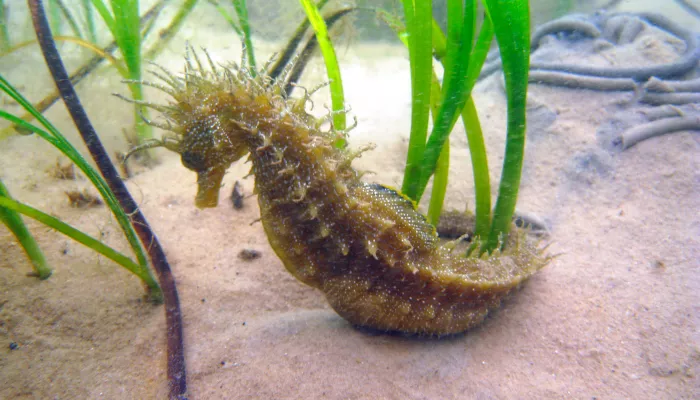About
Also known as the spiny seahorse, the long-snouted seahorse is recognisable by the fleshy mane on its neck and back. They live in shallow coastal waters and are pretty poor swimmers, relying on their prehensile tail to cling onto seaweed and seagrass to stop themselves being swept away. They don't have teeth and simply suck up their favourite prey of small shrimp and plankton. Seahorses are known to practice monogamy, though we no longer think that they mate for life. Seahorses are a type of fish and are related to pipefish and sea dragons.
How to identify
As their name suggests, long snouted seahorses have a longer snout than their short snouted seahorse cousins. Fleshy protuberances along its back give the impression of a horse's mane and its alternative name of spiny seahorse. Its angular body, framed by tubercles is usually a greenish-yellow.
Did you know?
Seahorses are the only animal with a true reversed pregnancy! The female transfers the eggs to the male who self fertilises them; he keeps them in his brood pouch, before giving birth to live young called fry.

